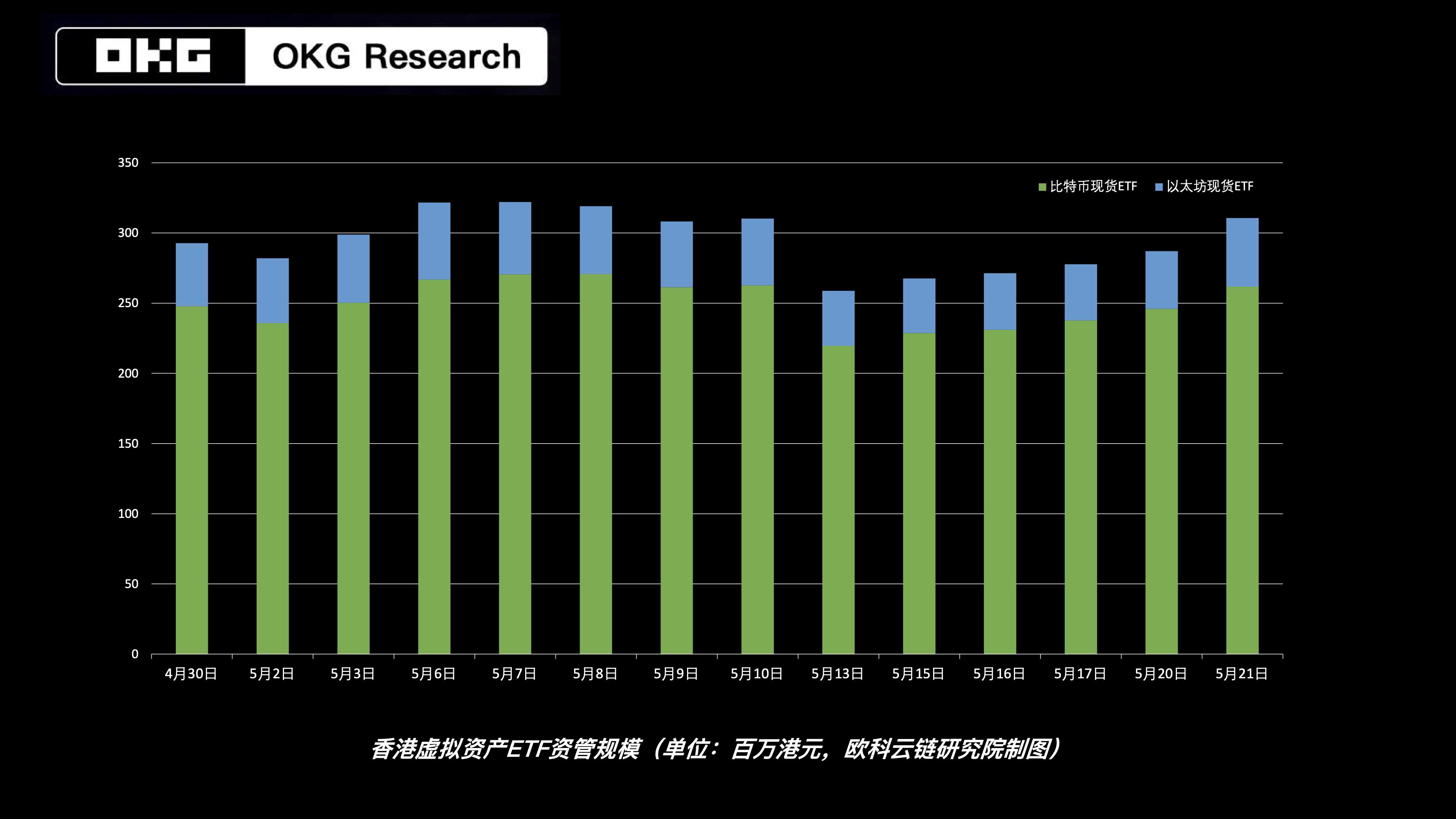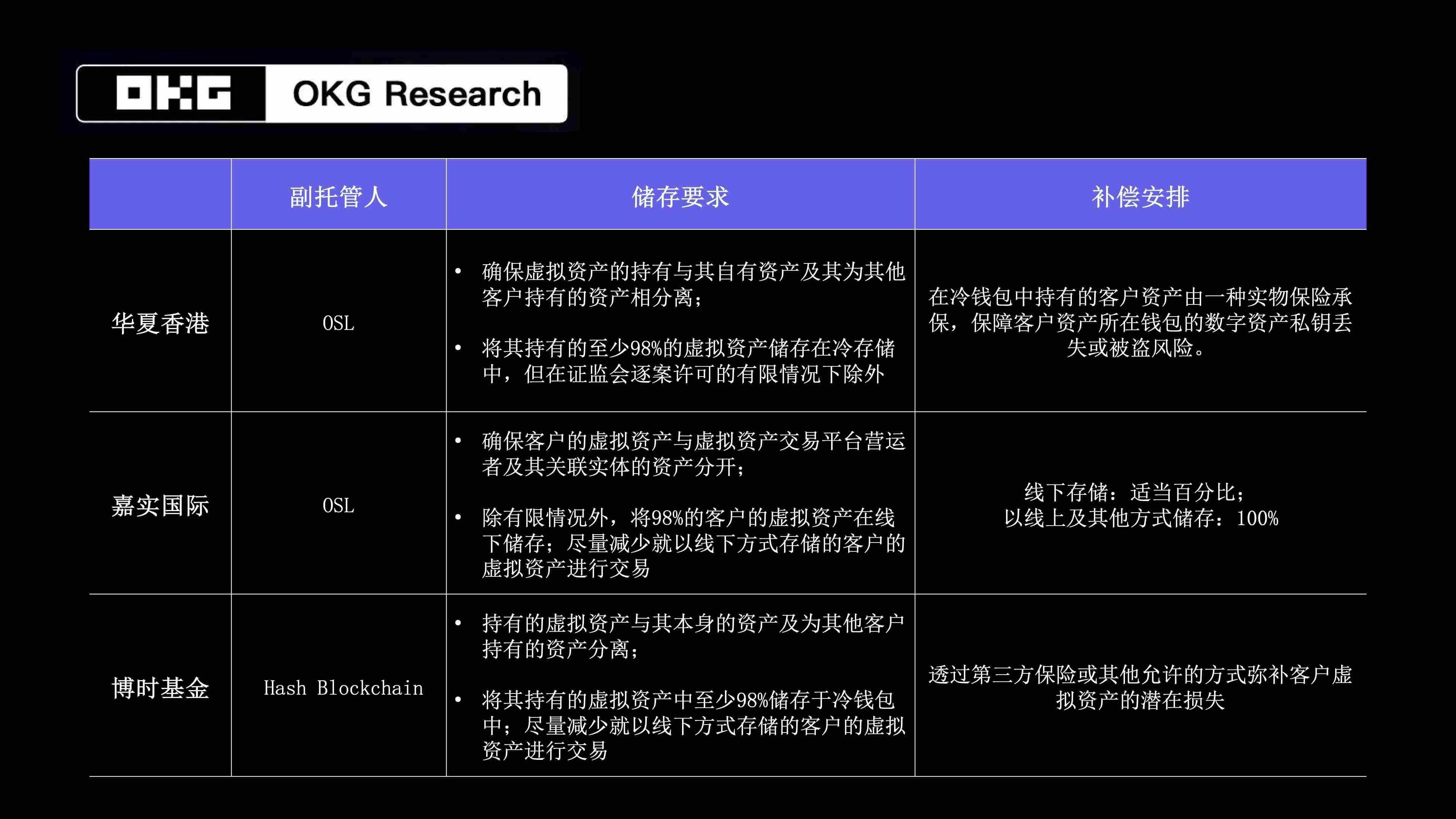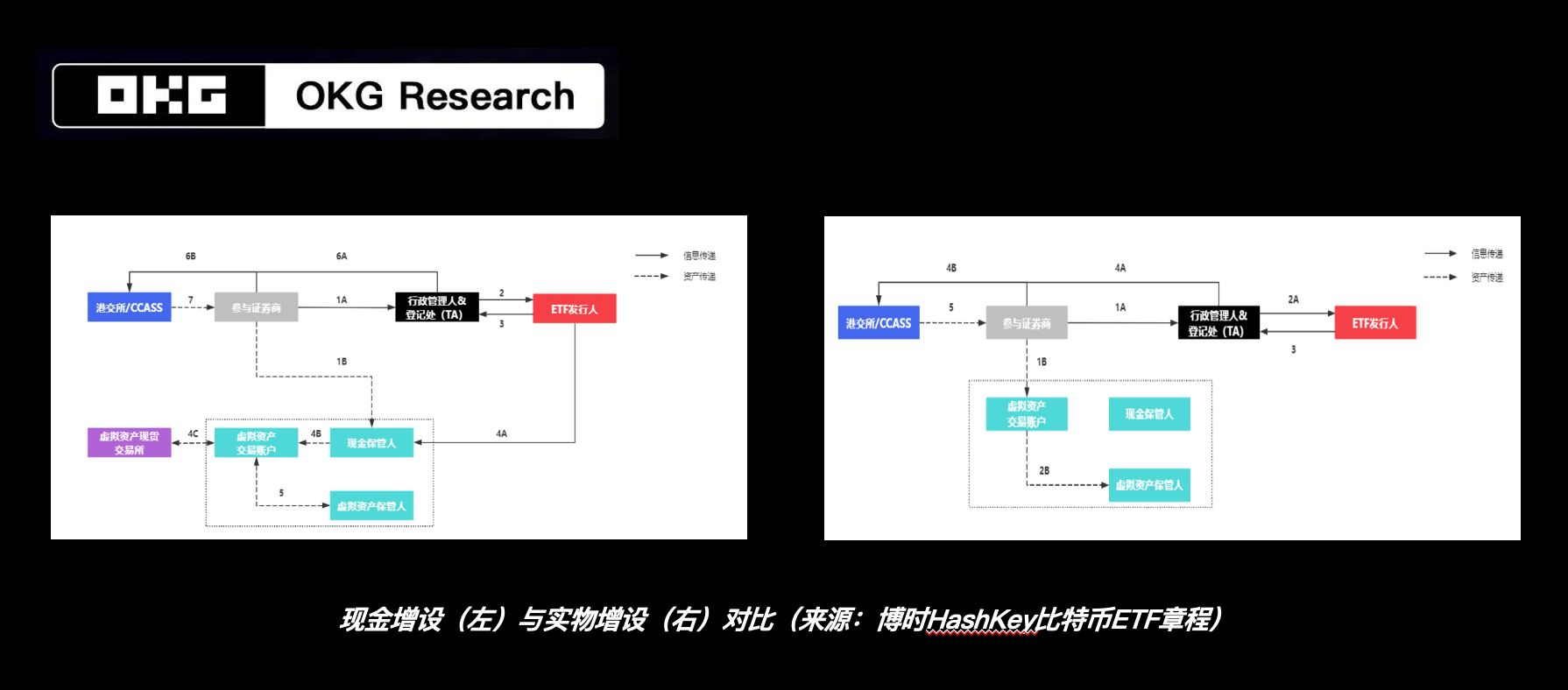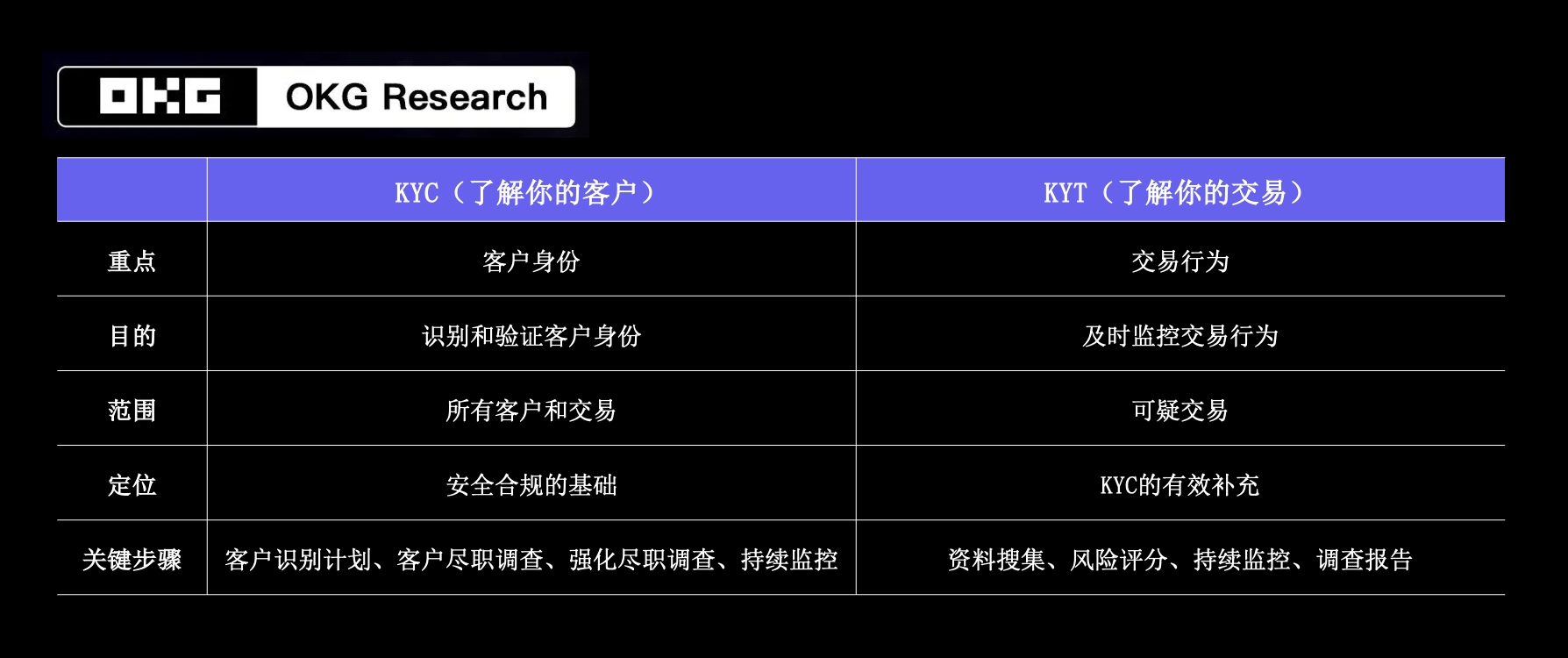Author: Jason Jiang, OKLink Research Institute
As the US SEC made a 180-degree turn in its attitude towards Ethereum spot ETFs, the UK financial regulator also approved the first batch of cryptocurrency exchange-traded products on the 22nd, taking steps to catch up with other virtual asset centers. At the same time, the Hong Kong market, which was the first to pass Bitcoin and Ethereum ETFs across the ocean, is now recovering after a period of tepid performance: According to SosoValue statistics, as of May 21, the total size of Hong Kong virtual asset spot ETFs has exceeded US$310 million, and has achieved stable growth in five consecutive trading days.

Putting aside the benefits of accelerating the integration of traditional finance and virtual assets, for ordinary investors, the most practical advantage of participating in virtual asset spot ETFs is that security is more guaranteed. This guarantee is first reflected in more reliable custody measures and compensation arrangements. Taking into account the special nature of virtual assets, in addition to the primary custodian, Hong Kong virtual asset spot ETFs now employ professional sub-custodians to be responsible for the custody of virtual assets, while improving the efficiency of fund asset management and dispersing custody risks. The sub-custodian must not only ensure that the virtual assets corresponding to the spot ETF are separated from its own assets and assets held for other customers, but also need to store most of the virtual assets in cold wallets, and can only temporarily store a small amount in hot wallets to meet subscription and redemption needs.
This is basically consistent with the SFC's previous virtual asset custody requirements for VATP. On the issue of virtual asset custody, OKLink has previously made more suggestions to the Hong Kong regulatory authorities. For example: the cold wallet hardware used to custody virtual assets should be kept in a decentralized manner, and the private key can only be used for one transaction, and should be discarded and updated afterwards; hot wallets can use cryptographic technologies such as MPC or key sharding to store private keys, etc. Some of the suggestions have been applied and practiced in the Hong Kong virtual asset ecosystem.
In addition, the sub-custodian should also establish appropriate compensation arrangements through third-party insurance or other permitted means to cover potential losses of at least the necessary percentage specified in the applicable licensing requirements related to virtual asset sub-custodians stored in cold wallets, and 100% of potential losses of virtual assets stored in hot wallets or other means, so as to ensure that investors are effectively protected even if their assets are damaged.

In terms of investment strategy, according to the regulations of the Hong Kong Securities and Futures Commission, virtual asset spot ETFs are not allowed to invest in any financial derivatives, or engage in securities lending, sales, repurchase transactions and reverse repurchase transactions, nor may they adopt any form of leverage for virtual assets; at the same time, issuers need to formulate liquidity management policies based on market conditions, identify, supervise and manage risks through various liquidity risk management tools, and ensure that investors' redemption requirements can be met in a timely manner.
Supporting physical subscription and redemption is the main difference between Hong Kong and the United States in the field of virtual asset spot ETFs. Although physical subscription and redemption are more responsive in terms of liquidity and price direction, and can also attract a wider range of market attention and investment groups for spot ETFs, the corresponding risks increase due to the increase in on-chain processes and participating entities. In order to deal with related risks, Hong Kong virtual asset ETFs have also made corresponding institutional arrangements. For example, during the subscription period of IOP products, in order to cope with the price fluctuations of the underlying assets, virtual asset spot ETFs collect excess security buffer funds to ensure the smooth operation of fund share creation. This type of over-pledge practice is not uncommon in the virtual asset industry. The asset-backed stablecoin DAI uses an over-pledge model to ensure the sufficiency of underlying assets, thereby achieving relative anchoring with the US dollar. However, except for the IOP stage, investors do not need to provide high security buffer funds when subscribing to ETF shares through physical subscription, because physical subscription operations are more convenient, do not involve the purchase of virtual assets in cash mode, and the relevant price fluctuations should be borne by investors after the subscription is completed.

In order to deal with the money laundering risks brought by physical redemption, Hong Kong also requires that institutions involved in the operation of virtual asset ETFs, including fund companies, custodians, virtual asset trading platforms, and participating brokers, must be licensed and approved institutions; at the same time, these institutions must go through a strict KYC/AML review process before customers deposit and withdraw coins to reduce the risk of illegal activities. At the brokerage level, Shengli Securities currently conducts two KYC reviews on customers before trading. If a customer's account has a large amount of virtual assets that do not meet KYC performance, it may conduct another due diligence review; at the virtual asset trading platform level, it will verify the ownership of the customer's wallet on the basis of KYC to ensure that the customer holds and controls the assets in the wallet. At the same time, KYT (know your transaction) will be used to check the on-chain transactions of the wallet for dozens of times in the past, complete the screening of the wallet address, and only after passing the whitelist verification can virtual asset deposits and withdrawals be carried out, reducing the risk of black and gray addresses participating in ETF transactions. In fact, with the increase in the adoption rate of virtual assets, compliance analysis tools based on on-chain data such as KYT have become a must-have for all parties in the virtual asset market. OKLink Research Institute has previously emphasized the importance and practicality of KYT technology to relevant institutions on many occasions in public consultations on Hong Kong VATP, fiat stablecoins and VAOTC.

As a mature financial product and a key product of the mainstreaming of virtual assets, spot ETFs not only accelerate the integration of traditional finance and virtual assets, but also provide a compliance channel for a wider range of investment groups. Although the high volatility of Bitcoin and Ethereum cannot be changed, security is always the core issue of ETFs. The above arrangements of Hong Kong virtual asset spot ETFs in investment strategy, asset custody and KYC/AML show the importance attached to security issues such as investor protection and anti-money laundering. These measures will enhance investors' trust and confidence in ETF products, attract more funds to enter the market, and promote the prosperity of Hong Kong's virtual assets and Web3 ecology.
About OKLink Research Institute
OKLink Research Institute is a strategic research institution under OKLink Group. Its mission is to help global business, public and social sectors gain a deeper understanding of the evolution of financial technology and blockchain economy. It outputs in-depth analysis and professional content covering topics such as technology application and innovation, technology and social evolution, and financial technology challenges. It is committed to promoting the application and sustainable development of cutting-edge technologies such as blockchain technology.






